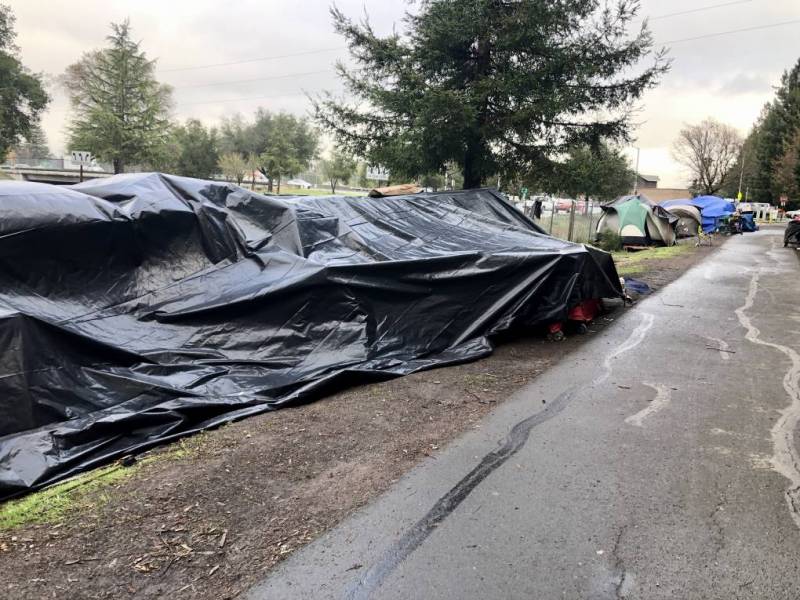The board on Monday announced that it will not purchase a third property it had been considering due to cost and time constraints that arose during the inspection process.
The county said it will continue looking for more homes to purchase over a wide geographical area. “It’s not fair to sort of concentrate all of the homeless-serving facilities in just one neighborhood,” Hopkins said.
Hopkins said residents will move in “hopefully in a matter of months,” but noted that the county still has to furnish the homes and select its occupants. It is still unclear how many people the properties will accommodate.
The county’s interdepartmental multi-disciplinary team, part of the Department of Health Services, which provides wraparound supportive homeless services, will interview people living on the trail and provide housing recommendations.
For months, makeshift tents and tarps have filled a stretch of the paved Joe Rodota Trail that runs alongside Highway 12, a major commuter artery through Santa Rosa, the county seat.
A January point-in-time homeless count reported 2,951 homeless residents in the county, an increase of more than 100 since the 2017 count.
Escalating public concern over the trail’s unsanitary conditions, including vermin and discarded drug needles, was echoed during the meeting’s public comment period. For over an hour, county residents cited concerns over costs and safety, among other things, in a bid to convince supervisors not to purchase the homes.
Florida Dates, a 30-year Santa Rosa resident and longtime landlord, objected to the purchase of the property in her city. During her time in the area, she’s lived in her car and given up a pet in order to find a place to rent, she said.
“We all make decisions in our lives. These people have a long way to go before they deserve to get in a historic house, a beautiful home,” she said. “I just don’t see the economics of it — up-front cost and continued maintenance.”
But this isn’t a new idea. The county has already purchased 60 shared housing units for people experiencing homelessness, a model Hopkins said has proven to be a “really effective” step in helping people become self-sufficient.
“It will help a lot more than just the initial folks who move in, because the goal is to actually get those folks to move out and into self-supported affordable housing from there,” Hopkins said.
Opposition to these kinds of projects, Hopkins added, is also nothing new.
“Sometimes they cause a stir when they first go in, because people are concerned, but those concerns often wind up ameliorated by successful management,” Hopkins said.
The board on Tuesday also voted to confirm Barbie Robinson, the county health services director, as interim head of the Community Development Commission, which oversees homeless services. She will replace Geoffrey Ross, who announced his resignation last week.
Robinson has received praise from supervisors, including Hopkins, for working alongside Ross to craft a plan to use $12 million in emergency funds to help residents of the encampment.
